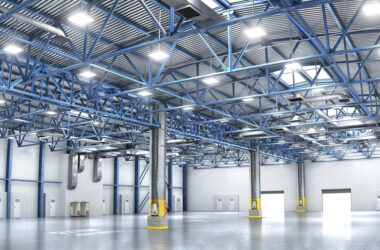Workers have difficulty reaching high regions when constructing, cleaning, or maintaining structures from the ground level, making these tasks challenging. Innovations are emerging, however, to make these processes much simpler and more accessible to construction workers in light of recent technological developments. Frame Scaffolding in HI is an example of technological advancement in this category. The building has been around for centuries, but only in the last two decades has it taken off in terms of interest.
Metal buildings, which have recently replaced bamboo ones, have several advantages. Because of their superior load-bearing capability and simple assembly and breakdown procedures, they are increasingly popular. Using rope access when constructing tall structures is possible, although doing so takes more time and costs more money. Scaffolding has been around for a long time, and its continued usage is attributed partly to its many benefits.
Development of Scaffolding
Holes in the walls of the Palaeolithic caves in Lascaux, in the Dordogne area of southwestern France, have been discovered by archaeologists to represent evidence of ancient Scaffolding. The remarkable murals were created by the aboriginal inhabitants, who lived there more than 17,000 years ago, and were made possible by a staging system revealed by sockets in the walls.
Evidence also suggests that the ancient Egyptians employed timber scaffolding while constructing structures near the pyramids. Herodotus also documented the use of Scaffolding in the Pyramid’s construction. Wooden Scaffolding was also utilized to move the stones into position. Statues were also carved out of a large rock using Scaffolding that went all the way around it.
In the early 20th century, metal fasteners were used instead of rope, marking the beginning of modern Scaffolding. Modern metal scaffolding tubes did not appear until the early twentieth century.
As recently as the 1970s, it was common to practice constructing and raising a scaffold structure out of pieces of bamboo tied together with hemp rope. Later in HI, a significant shift occurred in the erection of extremely tall structures as metal pipes became the norm. The current scaffolding industry is based mainly on metal scaffoldings.
Safety
Ensuring the security of construction personnel operating at elevated levels is crucial. There will be less chance of accidents like falls or injuries occurring in HI since the structure will provide a flat surface for workers to use when they are up in the air. It’s a safe place for construction workers to work from above. Workers can balance the metal construction since it is so flat.
Position
The structure positions the workers where they need to be and gives them a solid base for doing their tasks. Although a ladder allows one to reach greater heights, the former is preferable due to its stability. Frame Scaffolding in HI allows workers to get into the exact position they need while maintaining their safety, whereas ladders make it difficult for them to maintain balance.
Support
Construction requires a lot of raw resources, which both labor and the structure can support. No matter the size of your project, it is imperative that you observe all applicable laws and rules regarding worker safety. You should pick the machinery for your building project based on your understanding of its purpose and execution requirements.
Access
Employing Frame Scaffolding in HI will facilitate construction workers’ access to high, narrow, or otherwise inaccessible regions. As a safe work location for many people, the construction site is easy to move around. This not only improves their safety but also expedites the project’s completion. In addition, the layout facilitates access to the cleaning and upkeep of tall structures.
Efficiency
A secure working environment in HI gives construction employees the confidence to do their jobs without fear of harm. Because they are so simple to construct, move about, and mould to the structure’s shape, this boosts productivity.







